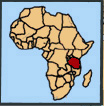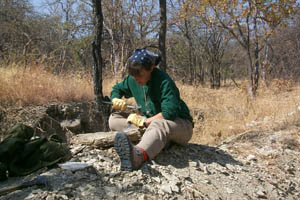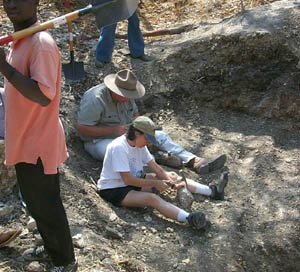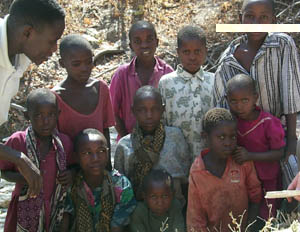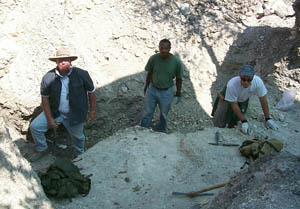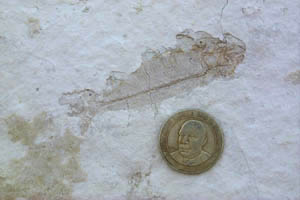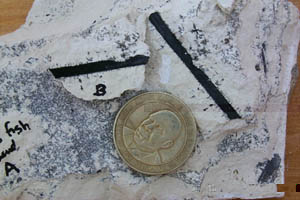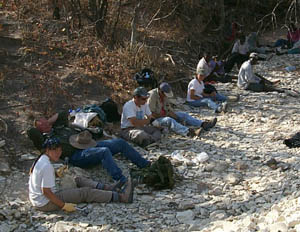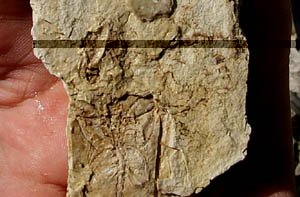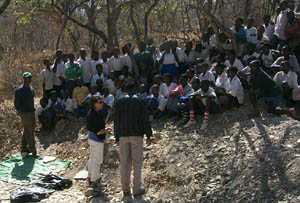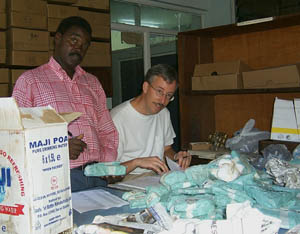|
|
|
We started by tracing the boundaries of the Mahenge lake (which is dry now), and found pits that were dug in the 1950's by earlier expeditions. We have started digging around the edges of the old lake, and are expanding a pit begun in a 1996 expedition. It is in the middle of where the lake used to be. We began splitting rocks at one of the sites, and have already found several fish and plant fossils, as well as crocodilien coprolite (that's fossilized crocodile dung!) |
|
|
|
One day when we were working we heard loud buzzing, and a huge swarm of bees passed over head. We thought we should run away, but the Tanzanians said we would be safe. We watched them fly past us. We also see other wildlife. At night we have the bush babies in the trees, and during the day we have seen praying mantises, walking-sticks, rock lizards, enormous grasshoppers, scorpions, centipedes, and beetles. We still haven't seen any flamingoes though. It is probably too dry for the bigger animals like lions and giraffes to come near our camp. |
|
We have had lots of visitors to our camp. Many of the children from the nearest village have come to see us, and watch what we are doing. They think it is rather strange that we sit in the dirt and break open rocks all day long! |
|
|
|
The pit has to be dug quite deep so that we can get down to the layers of rock that contain the fossils that we are interested in. |
|
We mark the layers that we want, so that we know what level we are working at. |
|
|
|
This fossil is quite tiny, but you can clearly see that it is a fish. |
|
Believe it or not, this is fossilized grass! |
|
|
|
When we dig up the rocks from the pit, we carry them in buckets to the shade along the dry river. Then we sit there and split them. In the evenings, we have to trim, wrap and log the fossils. We only have a few days left (reported on July 24) before we leave for home again, but we have 189 specimens already. |
|
At nearly the end of our stay, we had good luck and discovered two interesting fossils. The first one is a half skeleton that we think is a bat (photo on right). It is hard to tell because some of it is still buried in the rock. The other one we think is a claw and a toe bone of a bird. These fossils are very important because not many animal fossils of this age have been found in Africa. |
|
|
|
About 70 school children from the village of Mwaru came to the site. Bonnie told them the reason for our project and answered lots of questions. |
|
At the end of the dig, when they got back to Dar es Salaam, they had to pack up each of the fossils carefully, so that it could be transported safely, and not get broken or scratched. Have a look - how do you think they are going to get them ready for the long trip to the States? |
|
